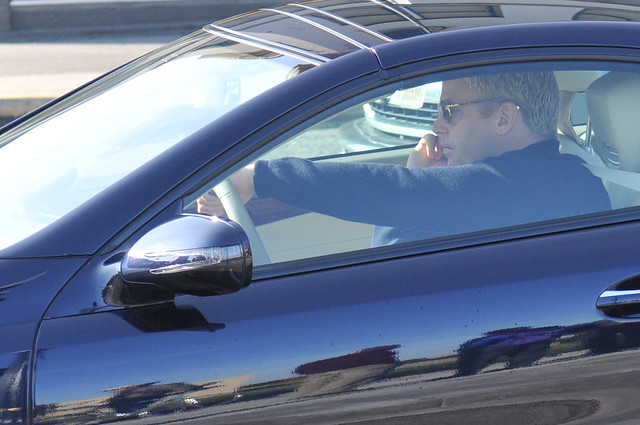The Portland area has invested $4.8 billion in a regional public rail network, and currently spends $313 million a year to hold down ticket prices on the system.
Another several million dollars each year go toward expansions of the region’s biking network.
Despite that investment, at least one Portland city council member has been arguing in the lead-up to a hearing next month that the public should also be subsidizing downtown car trips.
His reasoning: some of the people who drive downtown are poor.
“If we’re charging for parking, we’re taking someone earning nine, ten an hour and we’re making that eight-something an hour.”
Commissioner Dan Saltzman
The issue is coming up as the city discusses possible rate changes for its parking meters and publicly financed Smart Park garages.
One of the questions that’s likely to come up during an upcoming City Hall discussion on Dec. 17: Should the city keep giving away its street parking after 7 p.m., even in areas where street parking consistently fills up at night with people visiting restaurants, theaters, clubs and bars?
In a work session last month, Commissioner Dan Saltzman argued that maybe nighttime meters should remain free in order to subsidize the car commutes of people who work downtown at night, such as janitors and dishwashers.
“It’s a subsidy for low-wage workers to have the meters stop at 7:00 pm, so why can’t we continue that?” Saltzman said. “If we’re charging for parking, we’re taking someone earning nine, ten an hour and we’re making that eight-something an hour.”
“Do you throw a big subsidy at everybody because some people might need it?”
Commissioner Steve Novick
Commissioner Steve Novick, who directly oversees the transportation bureau, disagreed.
“It’s a question of, do you throw a big subsidy at everybody because some people might need it?” Novick said.
A better option for holding down parking prices for nighttime commuters, Novick suggested, might be to create a low-price permit system for the Smart Park garages.
And if the money from a parking meter rate hike were spent on improving non-car transportation, that might come out to a win for low-income workers, both downtown and elsewhere.
Advertisement
Novick and Saltzman’s disagreement raises a fair question. Is it a good idea for the government to subsidize a particular activity by poor people, even if it also subsidizes the same activity among rich and middle-income people?
Here’s one way to start answering the question: How many poor people actually drive downtown?
The best available data (which is, unfortunately, from 2006-2010) suggests that the central business district (south of Burnside, north of Jefferson) employs about 1,000 workers whose households make less than $15,000 a year. Of those, about 350 drive to work. That’s about 2 percent of the district’s drive-alone workforce.
Here’s a detailed version of the chart at the top of this post.
The stripes to the right represent higher-income households. Mouse over each stripe to see what income they represent, and approximately how many drive-alone commuters to the central business district make that much money. (For this chart, we looked at data for the central business district because it had by far the highest worker volumes and therefore the lowest margins of error. These margins of error are substantial, though, and these shouldn’t be interpreted as precise. You can see the source data here.)
Another 2,500 or so downtown commuters are in households that make $15,000 to $30,000 a year. About 700 of those people drive to work. That’s another 3 percent of the district’s drive alone workforce.
The remaining 95 percent of drive-alone commuters to Portland’s central business district make more than $30,000 — in most cases, much more. As the above chart shows, half of the district’s drive-alone workers are in households that bring in more than $100,000 a year.
Among those richest downtown workers, 59 percent drive alone to work. That compares to about 35 percent of the poorest downtown workers.
At the council’s Oct. 8 work session, Portland parking plan manager Judith Gray said there’s no question that higher parking prices are a disproportionate burden to the poorest people.
Then again, she added, a system that makes it hard to find a parking space also has a disproportionate burden on the poorest people.
People who are shift workers or low-wage earners, if they’re janitorial or working in restaurants, they have the least flexibility of all. If our system is not well managed, if it’s 99 percent full when they need to work, they don’t have an option. A lot of office workers or daytime workers other workers can be late. I worked in restaurants in Washington DC in the 80s. If you have to replace a daytime shift person, you’ve got to be on time. So a badly managed system is not an equity strategy for them.
Gray said she had an “open mind” for hearing ideas that could prevent poor people from being excessively hurt by parking costs.
Absent that, she suggested, the most broadly equitable strategy might involve the government charging what the market will bear for people who park cars on its land — and then “channeling the revenues to improve the system overall.”
— Michael Andersen, (503) 333-7824 – michael@bikeportland.org



